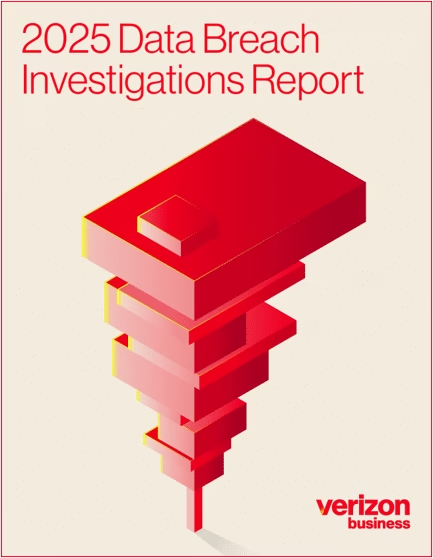The 2025 Verizon Recordsdata Breach Investigations Document (DBIR) is one amongst the most revered and broadly cited sources on cybersecurity incidents.
The First rate Ranking: Phishing Comes in Third
Per the DBIR:
- Exercise of stolen credentials is the #1 initial fetch admission to vector (22%)
- Exploitation of vulnerabilities is #2 (20%)
- Phishing comes in at #3 (16%)
(2025 DBIR, p. 10, Decide 5)
The file’s authors cloak, nevertheless, as they’ve in outdated stories, that “there is continually some hidden correspondence or switch between our numbers in credential abuse and Phishing. Typically incident responders cannot secure the distinctive offer of the credential that used to be feeble to fetch the initial fetch admission to, and there is continually the possibility it came from a outdated Phishing incident that used to be left out or took field originate air the purview of the organization’s visibility.”
(2025 DBIR, p. 20)
They further comment: “If we add up the numbers with Phishing, which may per chance regularly lead to credential abuse in the next step, non vulnerability vectors are easy the norm.”
(2025 DBIR, p. 21)
In light of this interrelationship between phishing and stolen credentials, phishing is prone to non-public achieved a grand greater, although hidden role in breaches, than what the reliable rankings counsel. Right here we see to gauge the probably extent of phishing’s affect consistent with its frequent connection to other vectors.
A Closer Gaze: The Human Ingredient Breakdown
To search the larger image, it’s crucial to request how the DBIR breaks down human involvement in breaches. That’s the set phishing’s role turns into a long way extra obvious.
The file’s authors advise:
“We look the human involvement in breaches at 60% this year.”
(2025 DBIR, p. 20)
Decide 15 on the identical web order breaks this 60% down further:
- Credential abuse: 32%
- Social actions (phishing, pretexting): 23%
- Malware interaction: 7%
Excluding breaches attributable to human error, these percentages assume the most customary ways human behavior contributed to breaches. One in all these is phishing, while the alternative two are on the entire its downstream outcomes.
- Credential abuse on the entire begins with phishing or infostealers deployed by phishing that harvest login shrimp print.
- Social actions consist of phishing and pretexting at as soon as.
- Malware interaction in these cases on the entire depends upon on the victim being tricked into opening or installing malicious order—one other hallmark of phishing.
Despite the incontrovertible truth that the file categorizes “credential abuse” individually from phishing, the authors originate obvious that phishing is on the entire what makes credential abuse conceivable:
“There is a non-trivial overlap between social actions (the set Phishing or Pretexting may per chance per chance well perhaps rob a credential) and the next credential abuse.”
“There may per chance be continually some hidden correspondence… typically incident responders cannot secure the distinctive offer of the credential… and there is continually the possibility it came from a outdated Phishing incident.”
(2025 DBIR, p. 20)
Furthermore, the DBIR affords prognosis of infostealer malware and its role in enabling credential compromise and ransomware attacks:
“With regard to stolen credentials, prognosis achieved on files stealer malware (infostealer) credential logs published that 30% of the compromised programs may per chance per chance well be is named enterprise-licensed devices. Nonetheless, 46% of these compromised programs that had company logins in their compromised files had been non-managed and had been web hosting each and each deepest and trade credentials. These are doubtless attributable to a BYOD program or are enterprise-owned devices being feeble originate air of the permissible policy.”
“By correlating infostealer logs and market postings with the web domains of victims that had been disclosed by ransomware actors in 2024, we saw that 54% of these victims had their domains cloak up in the credential dumps… and 40% of the victims had company email addresses as portion of the compromised credentials. This suggests these credentials may per chance per chance well had been leveraged for these ransomware breaches, pointing to probably fetch admission to dealer involvement as a offer of initial fetch admission to vectors.”
(2025 DBIR, p. 12)
These figures strongly counsel infostealers are a key driver of breaches tied to credential compromise, whether they are deployed by an fetch admission to dealer or by the attacker focusing on the company at as soon as. In both case, infostealers are but again and but again deployed by phishing. To boot-known in IBM’s 2025 X-Power Menace Intelligence Index:
“While it can per chance well be sophisticated to impart, most compromised credentials came from infostealers and credential harvesting campaigns, of which an rising quantity is delivered by phishing.”
(IBM X-Power Menace Intelligence Index 2025)
While the Verizon file indubitably aspects to using infostealers by fetch admission to brokers, infostealer deployment may per chance per chance well perhaps additionally be portion of a deliberate and premeditated assault chain — even supposing it’s basic to ticket afterward. As IBM notes:
“It’s doubtless that, for many legit accounts incidents, the particular an infection vector used to be a premeditated credential phishing or infostealer malware advertising and marketing and marketing campaign…”
(IBM X-Power Menace Intelligence Index 2025)
No matter the provision of the infostealer, the breach chain begins with phishing, proceeds by malware (infostealer) execution, leads to credential theft or legend takeover, and culminates in ransomware deployment or broader design compromise. Since phishing regularly drives each and each malware execution and credential abuse, this affords an inexpensive foundation for estimating how many entire breaches doubtless eager phishing or phishing-delivered malware.
Phishing in the Larger Image
If we rob into legend credential abuse (32%) and malware interaction (7%) as doubtless stemming from phishing or phishing-connected assignment, and add these to the 23% engaging social engineering, phishing or phishing-delivered malware most doubtless achieved a job in as many as 62% of human-ingredient breaches.
Since human-ingredient breaches originate up 60% of all breaches, we calculate:
0.62 × 0.60 = 37.2%
That intention phishing or phishing-delivered malware used to be doubtless the initial offer of compromise in as many as 37% of all breaches in the DBIR dataset—extra than any other single fetch admission to vector.
Even when phishing isn’t named because the initial fetch admission to vector, it’s regularly the significant vector of compromise—whether feeble by the attackers themselves or earlier in the chain by an fetch admission to dealer harvesting credentials for later sale or use.
In transient: phishing may per chance per chance well perhaps no longer high the chart firstly study, however the customary portion it plays in infostealer/malware deployment and credential harvesting suggests it is doubtless all in favour of over a third of all breaches—making it the most consequential vector in the possibility panorama.
This prognosis aligns with the Identity Theft Resource Center’s 2024 Recordsdata Breach Document, which stumbled on that phishing, smishing, and trade email compromise—grouped as a single category—had been the most but again and but again reported assault vectors, particularly amongst the 93% of breached organizations that had been deepest corporations. Credential stuffing led amongst public corporations, who represented the ideal 7%, but as already well-known, these credentials are on the entire harvested by phishing or phishing-delivered malware.
Proactive Measures to Mitigate Phishing and Credential-Primarily based Assaults
Companies need to easy proceed to regard phishing because the assault vector to be reckoned with, and may per chance per chance well perhaps implement proactive measures to slice their possibility of a breach.
These measures consist of:
Personal files removal to disclaim attackers the tips they must craft phishing lures, hit their targets, or crack passwords
Minimizing on-line publicity of worker and organizational files to disrupt attacker recon and cease focusing on
Phishing awareness coaching to relieve workers acknowledge and file suspicious messages sooner than they trigger injure
Endpoint security and browser hardening to cease infostealers from being put in and exfiltrating credentials
The use of password managers to cease password reuse and guarantee that credentials aren’t without concerns guessed or cracked from breach dumps
Enabling Multi-Factor Authentication (MFA) and, the set conceivable, using FIDO2-compliant hardware tokens to cease fetch admission to even supposing a password is stolen or phished
Place a policy to verify soft requests—honest like wire transfers or login resets—by a second, relied on channel
Constructing and monitoring canary accounts to detect early indicators of focusing on
Enforcing least-privilege fetch admission to and segmenting inner networks to slice the affect of credential theft or lateral circulation.
Deploying UEBA instruments to detect anomalies in user behavior, honest like recurring login conditions or fetch admission to locations, that would cloak credential misuse
Enforcing email authentication protocols (DMARC, SPF, and DKIM) to protect against spoofing and impersonation
Subscribing to relied on possibility intelligence feeds to cease instructed about emerging phishing tactics, malware variants (including infostealers), and indicators of compromise that may per chance per chance well be blocked or monitored proactively
As recently’s most customary initial offer of organizational compromise—whether relate or concealed—phishing remains the dominant possibility and demands continuous, layered defenses from organizations of every and each size.


